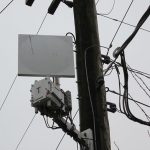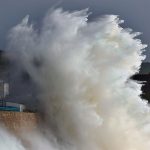The U.S. Could Use More Offshore Wind Power

Image courtesy of Nina Ali under CC0 1.0 Universal (CC0 1.0) Public Domain Dedication, resized to 700 x 391 pixels.
I stumbled onto a Forbes article the other day that made a strong case for offshore wind power here in the U.S. Although the first utility-scale offshore wind farm started development in May 2023 off the coast of Massachusetts, the progression of the industry in the U.S. has been slow.
Simply put, the article concludes that offshore wind power can only help reliability, and the nation’s clean energy goals cannot be achieved without it.
What is Holding Back the U.S. Offshore Wind Power Industry?
The aforementioned Massachusetts wind farm will have 62 turbines capable of providing electricity to more than 400,000 homes. That’s a great starting point. But given that the U.S. has one of the world’s best offshore wind environments, there should be a lot more projects in the pipeline by now. The U.S. lags far behind Europe, China, and other places in this regard.
According to the Forbes article, if the U.S. is able to supply 10-25% of the nation’s power supply via offshore wind by 2050, it would result in up to 750 GW of incremental supply as well as close to 400,000 new jobs. This would go a long way to helping the U.S. achieve its clean energy goals.
But in order to make inroads, several things need to change:
- Government and regulatory bodies should increase their offshore wind goals to create certainty for investors and developers. This is critical, because these projects are very expensive and time consuming to develop, so any type of ‘guarantee’ should help grease the skids.
- While the Inflation Reduction Act offers tax credits for large turbine equipment, additional incentives should be introduced to spur the manufacturing of smaller components.
- The “infrastructure” for offshore wind power projects should be developed – several billion dollars will be needed to build out ports, shipyards, transmission networks, and similar things.
In the final analysis, the Forbes article makes a great case for why offshore wind power developments should be accelerated, and it outlines a few key industry changes that need to happen for this to become a reality. It will be interesting to see how this plays out in the years (and decades) to come.



